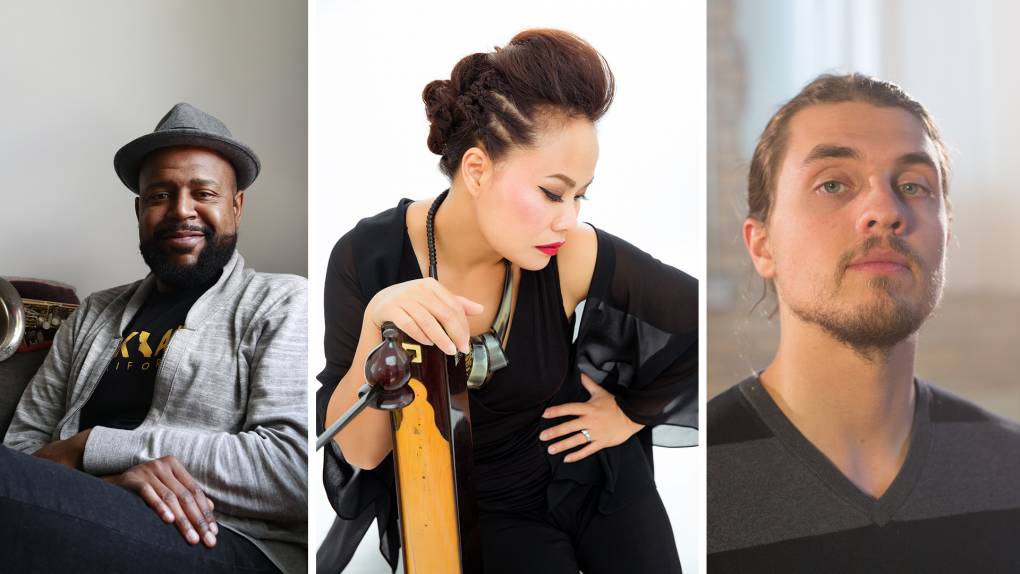
Eleven of the artists hail from the Bay Area. And like Võ, many don’t work in strictly jazz per se. Pianist Javier Santiago, for instance, blends jazz and beat-making, and sometimes invites rappers on to his songs as guest vocalists. Others, like Howard Wiley and Kev Choice, have toured with major artists like Lauryn Hill, and are also fluent in soul, R&B and—in Choice’s case—classical.
April 29 through May 8, San Jose Jazz will debut performances that some of the grantees recorded in its new Break Room, a streaming studio that will double as an intimate concert space when indoor shows resume at the venue. In the meantime, fans can catch recorded performances by Võ, Santiago, Choice and Wiley, as well as Oran Etkin, Tammy Hall, Ten Spencer, Chris Cain, Claudia Villela, Justin Ouellet, Robbie Benson and Ian Santillano. Online performances are ticketed, and the public can also watch them for free in the form of projections on the side of the San Jose Jazz headquarters at South 1st and San Carlos Streets.
“[The project] gives me hope that we’ll come back, and when we come back we’ll come back stronger,” Võ says. “And the honor of it overrides the actual financial award.”
For other artists, the commission became a platform to reflect on the pandemic’s mental and spiritual toll. “It made me really have to look and dig deep for some faith in the way the world was turning out,” says Javier Santiago, whose performance will stream alongside Võ’s on May 6.
Santiago says he hit a slump during the winter after months without live shows, which were how he previously made a living. He composed his light, soulful and somewhat funky piece, “The Light That Awaits Us,” as a way to summon “the patience and perseverance to get through this.”
Howard Wiley’s new song, aptly titled “The Never Ending Year,” also looks to make meaning from the trauma of the pandemic. “The first part of the composition is the state of not knowing, not being able to do so many things that are vital—or what we perceived as being vital—for us as artists and people and community,” says Wiley, whose performance screens on May 8.
The second movement of Wiley’s composition reflects another truth that gave him perspective. “The unrelenting resilience of the creative spirit is amazing,” he says. “So much was going on in our lives last year, and yet we still found ways to creatively express [ourselves]. … That is the optimism—that is my favorite part about jazz music.”
Wiley misses Friday nights at Cafe Stritch, another cornerstone of San Jose’s jazz scene he says was often “lit to death” with music and dancing in the before times. But he’s encouraged that an institution like San Jose Jazz is doing its part to keep the music playing.



